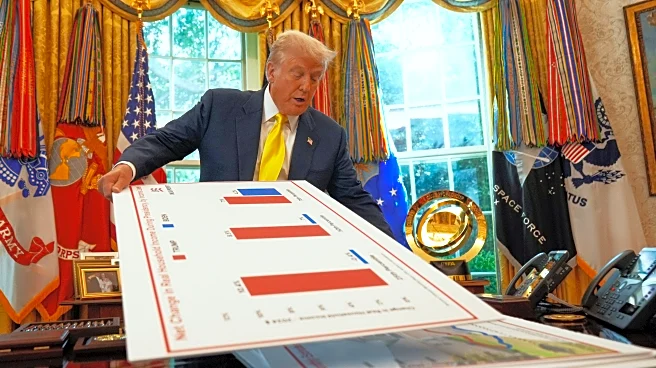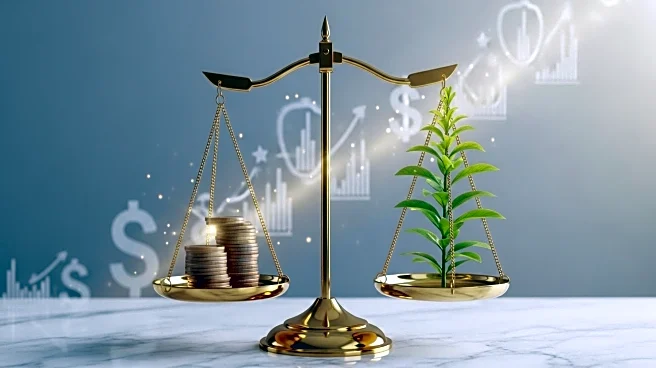Rapid Read • 7 min read
The U.S. economy experienced a stronger rebound in the second quarter of 2025 than initially reported, according to the Commerce Department's revised estimates. The Gross Domestic Product (GDP) grew at an annualized rate of 3.3% from April through June, up from the previously estimated 3%. This growth follows a 0.5% decline in the first quarter. The revision was largely driven by increased consumer spending, which accounts for about two-thirds of the U.S. economy, and was adjusted to a 1.6% annualized rate from the earlier 1.4%. Business investment also saw a significant upward revision, particularly in intellectual property products, rising to 5.7% from 1.9%. Despite these positive adjustments, underlying economic momentum appears to be slowing, with concerns over President Trump's trade policies impacting future growth.
AD
The revised GDP figures highlight the resilience of the U.S. economy in the face of trade uncertainties and inflation concerns. The increase in consumer spending and business investment suggests a temporary boost in economic activity, which is crucial for maintaining investor confidence and supporting job creation. However, the slowing momentum and potential impacts of trade policies could pose challenges for sustained growth. A weakening labor market and tariff-induced inflation are expected to constrain economic activity in the latter half of the year, potentially affecting industries reliant on consumer spending and international trade.
Economists predict that GDP growth may fall below 1% in the second half of the year due to ongoing trade tensions and a weakening labor market. Businesses and policymakers will need to navigate these challenges carefully to avoid further economic slowdown. The focus may shift towards mitigating the impacts of tariffs and exploring new trade agreements to stabilize the economy. Additionally, monitoring inflation rates and labor market trends will be crucial for adjusting fiscal and monetary policies to support growth.
AD
More Stories You Might Enjoy












